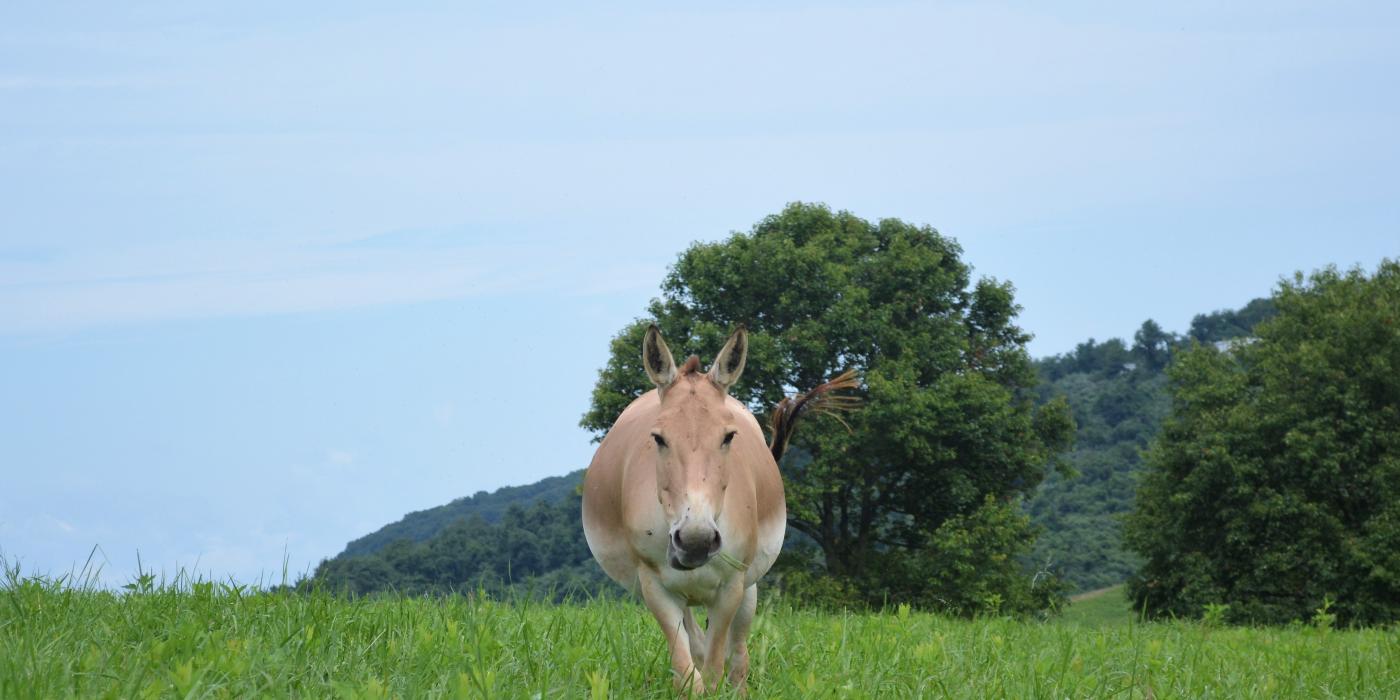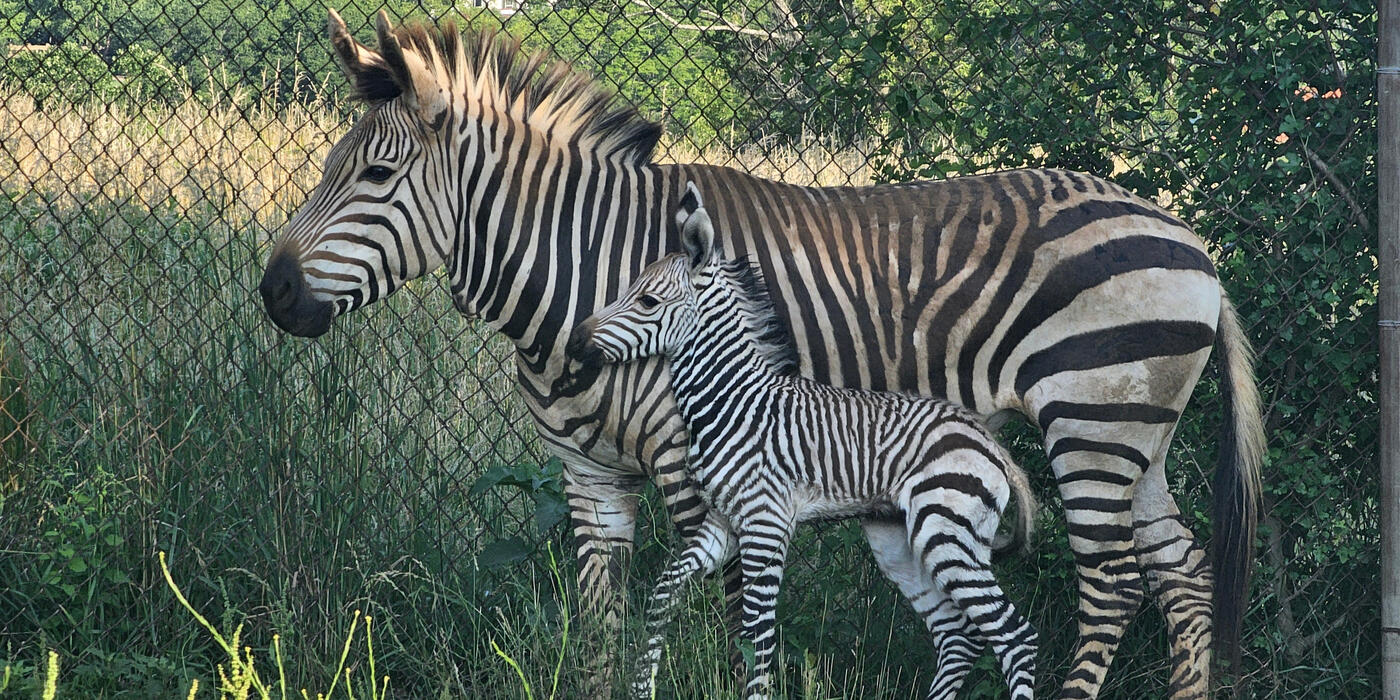The Particulars of Onager Pregnancy
Onager Pregancies Last One Year, But Planning For Them Takes Much Longer
Green Hill Barn, where our herd of Persian onager mares lives at the Smithsonian Conservation Biology Institute, has been full of excitement during the past few weeks since the arrival of our first foal of the year on Aug. 1 — a colt born to Sayeh.
Our newest addition is doing well. He is keeping up with the herd and is thriving. His mom, Sayeh, is very protective of him, as is his Grandma, Yasmin. Sayeh is making sure everyone keeps their distance from the new herd member and that he stays close to her. He may only be a few weeks old, but let me tell you, this little guy is FAST! It did not take him long to learn how to balance on those long legs of his.
In the wild, onagers depend on numbers and speed to avoid predators. Foals are able to stand and run within hours of birth, which allows them to rejoin their herds quickly and keep up with them. Our colt won’t be the only new addition to the herd, we are going to hopefully have several more foals born in the next few weeks. And we have been awaiting their arrival for almost an entire year!
Onagers are pregnant for a full year (365 to 368 days), but planning for a foal can start years before that! The Persian Onager Species Survival Plan (SSP) makes breeding recommendations for the onagers. A designated coordinator makes the recommendations based on the pedigree (family trees) of the onagers and calculations of genetic variations. When the SSP identifies a male onager who is a the best genetic match for the females in our herd, we will introduce them to him.
If the introductions go well and the onagers breed, then we wait. After playing matchmakers, we transition to becoming a combination of keepers and midwives. We can’t be sure if the females are pregnant until we can collect urine from them. Getting a urine sample from them is surprisingly easy!
One of the keepers, Tara Buk, has been able to train our onagers to urinate on command because they are very food motivated. Remember, there isn’t much they wouldn’t be willing to try in exchange for an apple biscuit. That apparently includes urinating on command. We can collect the urine and take it to our amazing research team at the Endocrine Lab for analysis.
They can tell us based on the hormones in the samples which onagers are pregnant and which are not. We also use behavioral observations to confirm if a female is pregnant because if her hormones are changing, her behavior will likely mirror that. Onagers show estrus (breeding) behaviors and cycle every 25 days. As keepers, we can keep watchful eyes on our females and see if they are showing signs of estrus during the months following a pairing with a male. If they do, then they probably are not pregnant. The scale also doesn’t lie. A steady weight gain can also be an indicator of pregnancy, so we regularly weigh them.
Near the end of pregnancy, it’s obvious that an onager is pregnant. They get extremely round near the end of their pregnancies and their bellies bow out on their sides. The closer the possible birth range gets, the more frequently we check on the herd until it’s almost constant. We are looking for possible signs of labor from the pregnant females. The telltale signs of a mare in labor are pacing, looking at her sides, udder development and lack of interest in food.
Any of those signs can mean that a female is in labor or will be shortly. There is little we can do except wait and watch for the arrival of a new herd member. If we see anything that might signal there could be a complication with the delivery, we immediately call our veterinary staff, who are on-call in the case of an emergency.
After a year of waiting and anxiously watching the labor and delivery, the best part begins—the foal is born! Usually, it only takes about half an hour for the foal to get on their hooves (feet). In the wild, the foal needs to stand as quickly as possible, because the quicker they can stand and run, the faster they can get away from predators. Once standing, onagers quickly gain balance and before you know it, they are running.
They might look short and stocky, but they are extremely fast. The colt was keeping up with Sayeh within just a few hours of being born. While they are literally getting their feet under them (walking and running), the foals get full access to pasture with their moms and other herd members. New moms, like Sayeh, can be very protective, which is normal and part of their instincts as mothers. They usually start to relax within a few days.
The other females are extremely excited about the colt. They are usually very interested in what this uncoordinated lanky little creature is, especially the younger onagers that have never seen a foal. Dorri and Farrah were extremely interested in the new foal. We’ll be going through this entire process two more times in the next few weeks!
Related Species:




